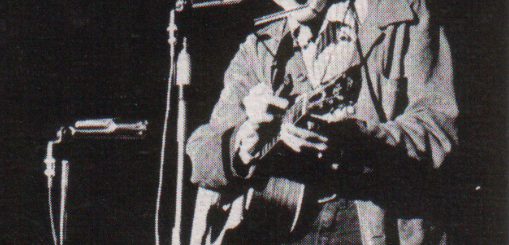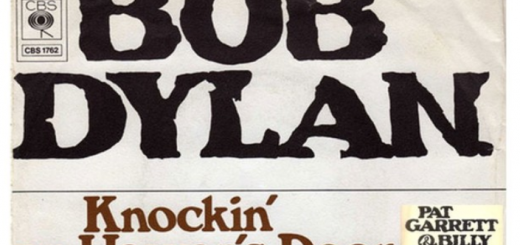“Rainy Day Women #12 & 35” by Bob Dylan
During his youth Bob Dylan was a lot like a rap star. And what we mean by that is that he had the type of don’t-give-AF attitude where fans expected him to live what he says and say what he means. This was especially true during the 1960s and 70s, a tumultuous era in American history which also marked the heydays of his success and influence. And he was a countercultural figure throughout.
And in terms of the 1960s in particular, for whatever reason there were a lot of “drugs songs”, as they were called then, floating around. Many of the biggest acts of the day, with hippyism being rampant, were very much up on it. But this wasn’t the 21st century, when we’ve even grown accustomed to musicians smoking spliffs on videos.
Back then if you are referencing weed for instance, especially if you’re a big name like Dylan, then you better be able to conceal the overtness behind metaphors. And why? Because that would be the only way to get the product past media censors who actually screen mainstream acts, as well as of course the law.
And by this juncture in his career Dylan had already established himself as a recognized weed aficionado. In fact he was one of those types of artists who apparently relied on the skunk to encourage his creativity. So when he drops a song like this, it would be easy for listeners to jump to a hasty conclusion that he is in fact referencing grass, considering the terminology the lyrics rely on.
“Getting Stoned” or “Being Stoned”?
So with that setup let it be known that these “rainy day women”, whoever they may be, are not mentioned in the song. Rather the primary subject is “they”, and the action that they are mainly engaged in is ‘stoning you’.
Now of course there is a difference between ‘getting stoned’ and being “stoned”. And yes, in the chorus Dylan does put forth that “everybody must get stoned”. ‘Getting stone’, bluntly put, is a commonly used metaphor for getting high or intoxicated in general. But all lyrics considered, that is not how Bob is using the phrase within.

For ‘being stoned’ is akin to facing persecution. And whereas ‘getting stoned’ is only mentioned in the chorus, ‘being stoned’ is mentioned throughout. And again it is these unidentified subjects “they”, who are committing this stoning.
So it’s like there’s two different colloquial ways to use the term “stoned”. And on this track Dylan is using it in the persecution, not drug, sense of the word. But given his established character as elaborated above, this may be something that many listeners are unable or even unwilling to pick up on.
Who are “They”?
Meanwhile as far as “they” goes, even though as used it is a suitable pronoun, it is also a colloquial term in and of itself. And in the latter sense, what it points to, generally speaking, is the powers that be, if you will. That is why for instance, you may hear of some shrouded division of the government being referred to as “they”.
Or within the context of this song, we can say that the term is being used to refer to the media and other such critics who, theoretically, represent the mainstream, judgmental way of thinking.
In fact we can put forth a notion that the “they” Dylan is referring to is the same as the type of individuals who in more-modern times we refer to as ‘cancel culture’. In other words, “they” are the types of people who are just waiting for you to do something illegal or politically-incorrect, so that they can do their best to destroy you.
Is “Rainy Day Women #12 & 35” really about Drugs?
So in actually listening to the song, despite Dylan’s personal history with marijuana, you come to the conclusion that it really doesn’t have anything to with ganja, then Bob himself will agree with you. Indeed the whole idea of dropping a “drug song”, according to his own words, offends him.

And what this track is actually about is the aforementioned concept of ‘stoning’ being a synonym for facing persecution. In fact as you may already know, this analogy goes all the way back to the days of the Bible, when people who break certain laws were literally stoned to death. It is that whole overall concept which the lyrics are based on.

So the “they”, once again, would be judgmental people. The “you” would in fact be you, or whoever it is they are persecuting at the moment. And the ‘stoning’ is the said persecution.
Dylan’s Persecution
And this particular persecution that Dylan is facing is due to his celebrity. Indeed at the end of the day, you would likely agree that any person who reaches a certain level of fame will constantly be under the microscope, by fans and haters alike.
And it is evidently such an idea that Dylan is alluding to in terms of the phrase “everybody must get stoned”. Or put more simply, no one is above the persecution of individuals who decide it is their goal in life to bring others down. Indeed this very topic is quite recurring in the music industry as far as being famous goes.
Or let’s say that even more so than us layman, celebrities especially know how it feels to constantly have someone on your ass, feening for a reason to chastise you. And that would be especially true for bad boys, i.e. those who were overtly countercultural, like Dylan was in his youth.
In Closing
As a matter of fact in conclusion, we can even put forth that this is a further testament to Bob’s own badas*ery. Of course Dylan, who was in his mid-20s at the time, knew that people would think he was singing about drugs.
And he uses that bait to instead drop a song totally not about drugs but instead serving as a roundabout criticism of such individuals’ own actions. In doing so, he even harps back to the unfair slaying of Stephen in the Bible. And such misdirection is perhaps why people who were actually alive and cognizant during Dylan’s heyday consider him to be a musical genius.
Facts about “Rainy Day Women #12 & 35”
This track was released back in the relative old days, before many of us were even alive, of 1966. More specifically it was issued by Columbia Records on 12 April of that year. It was the second single from Bob Dylan’s classic album “Blonde on Blonde”.
Even by that time, “Blonde on Blonde” was already Dylan’s seventh-studio album. He had been a professional musician since 1961 and, to note, is still dropping records into the 2020s. In fact his 39th studio album, “Rough and Rowdy Ways”, came out in the year 2020, when he was 78 years old.
Bob Dylan wrote “Rainy Day Women #12 & 35”. And the producer of the track is the late Bob Johnston (1932-2015), who was one of his regular collaborators.
According to Robert Shelton, a writer who specializes in the personal history of Bob Dylan, this track was initially inspired by a song by the late Ray Charles (1930-2004). And that particularly piece, which also came out in 1966, is called “Let’s Go Get Stoned”. And yes, Brother Ray was in fact idealizing getting drunk with his “buddy”.

What really is the meaning of “Rainy Day Women #12 & 35”?
As far as the title of this track goes, there have been various theories put forth as to who actually “Rainy Day Women #12 & 35” are. And this is since, as noted earlier, they aren’t mentioned or for that matter even referenced in the song. But the three prevailing theories are as goes.
Theory #1
The first is that two ladies, a mom and daughter, visited the studio where Dylan was working one day while it was raining. Then the singer went about guessing how old they are and came up, respectively, with 35 and 12. And those hunches were in fact correct.
Theory #2
A second, less-accepted history is that the title is somehow related to an article Bob Dylan read. And what that article was about is punishments against women in the Islamic world. Indeed earlier we implied that the practice of stoning was relegated to the old days just for effect. But in reality of course we are aware that some countries, such as say Saudi Arabia for instance, still relying on such archaic forms of law enforcement.
Theory #3
Meanwhile the third theory is more mathematical. And that is to say that if you were to multiple the number 12 by the number 35, you get the product of 420. And those who are really into cannabis culture know that the number 420 is considered sacred – for lack of a better word – therein.
However, the problem with this argument is that the term “420” didn’t even come into existence until the early-1970s, some years after this song was already released. That is what we meant when we say some people will always associate this track with weed, regardless of what Dylan says. For instance, The Black Crowes covered “Rainy Day Women #12 & 35” in 1995 to be featured on an album that came out that year. And guess the name of that project? “Hempilation”.
But if Bob Dylan, even after all these years, asserts that the song is not about marijuana, then we don’t have any reason not to believe him. In fact it was as recently as 2012 when he rather implied that the lyrics were inspired by the Biblical Book of Acts. And therein was featured the aforementioned Stephen, who was basically stoned to death by the masses due to his beliefs.








